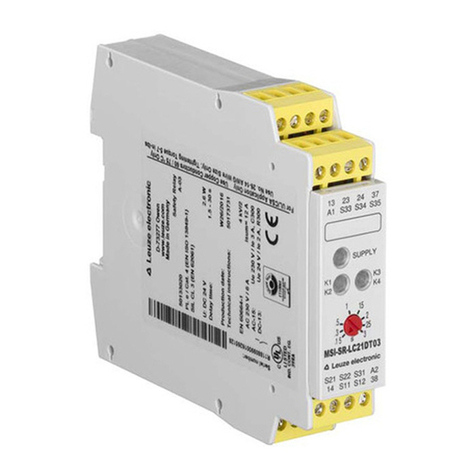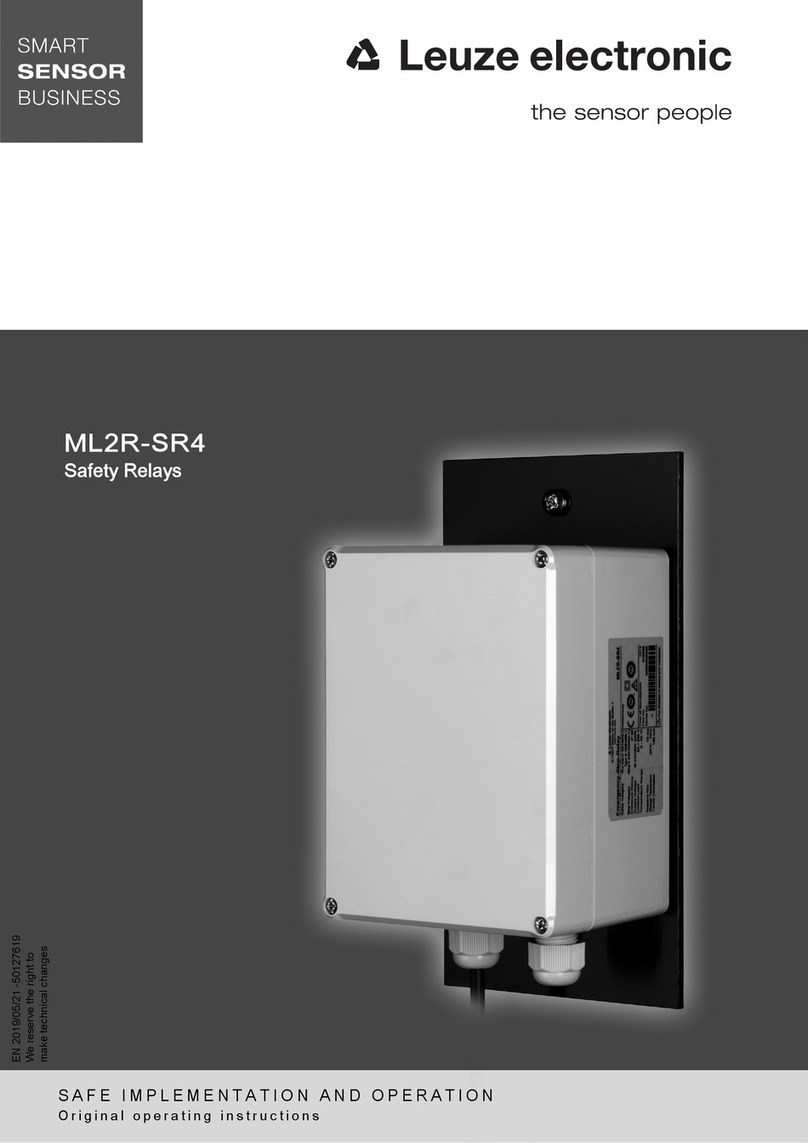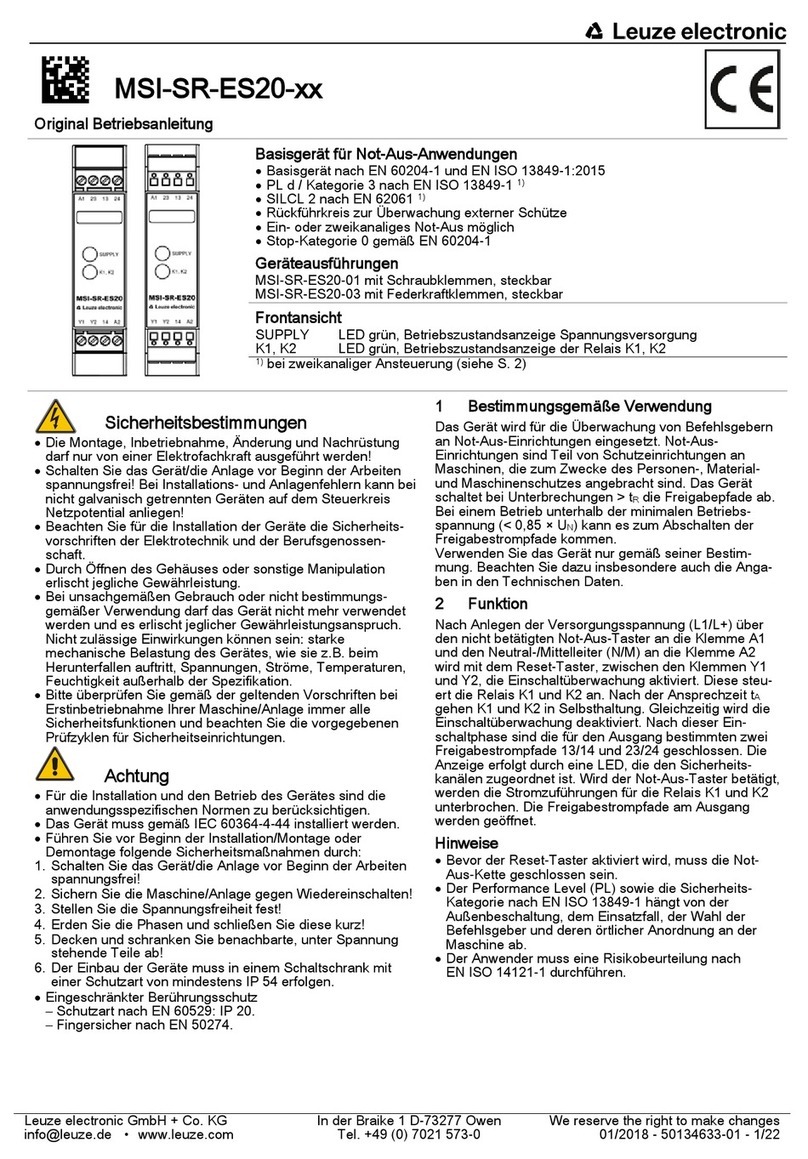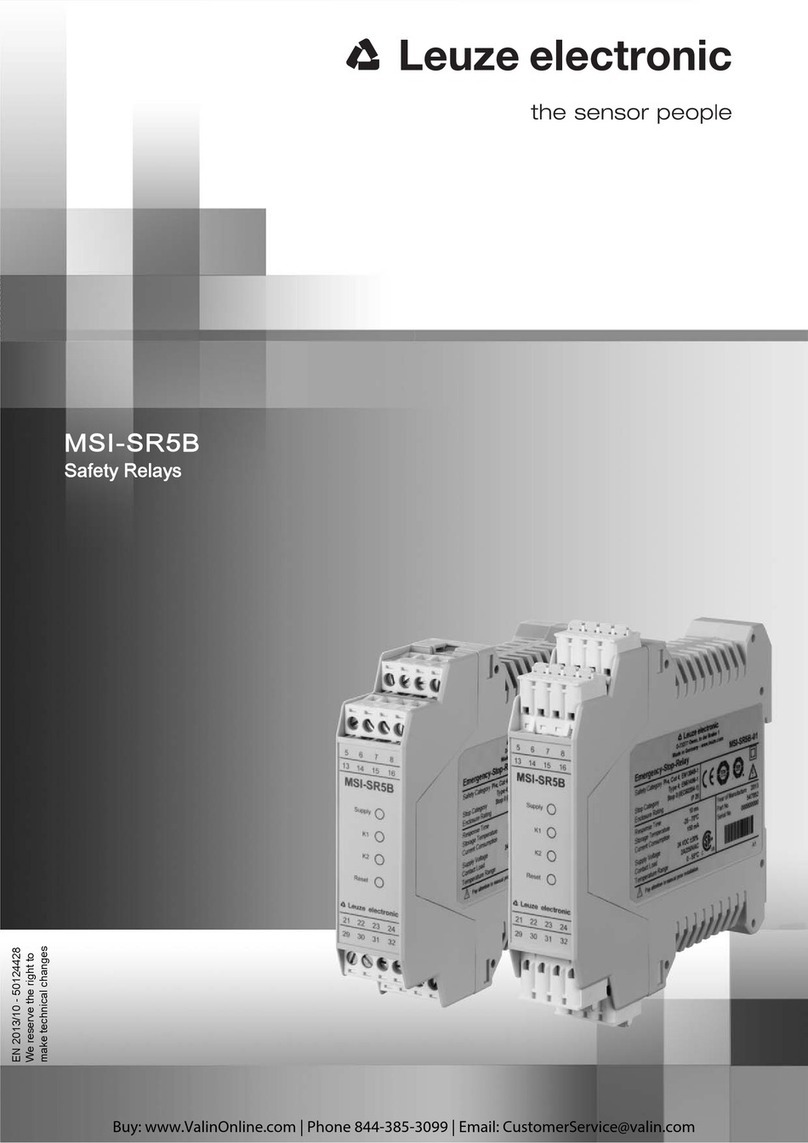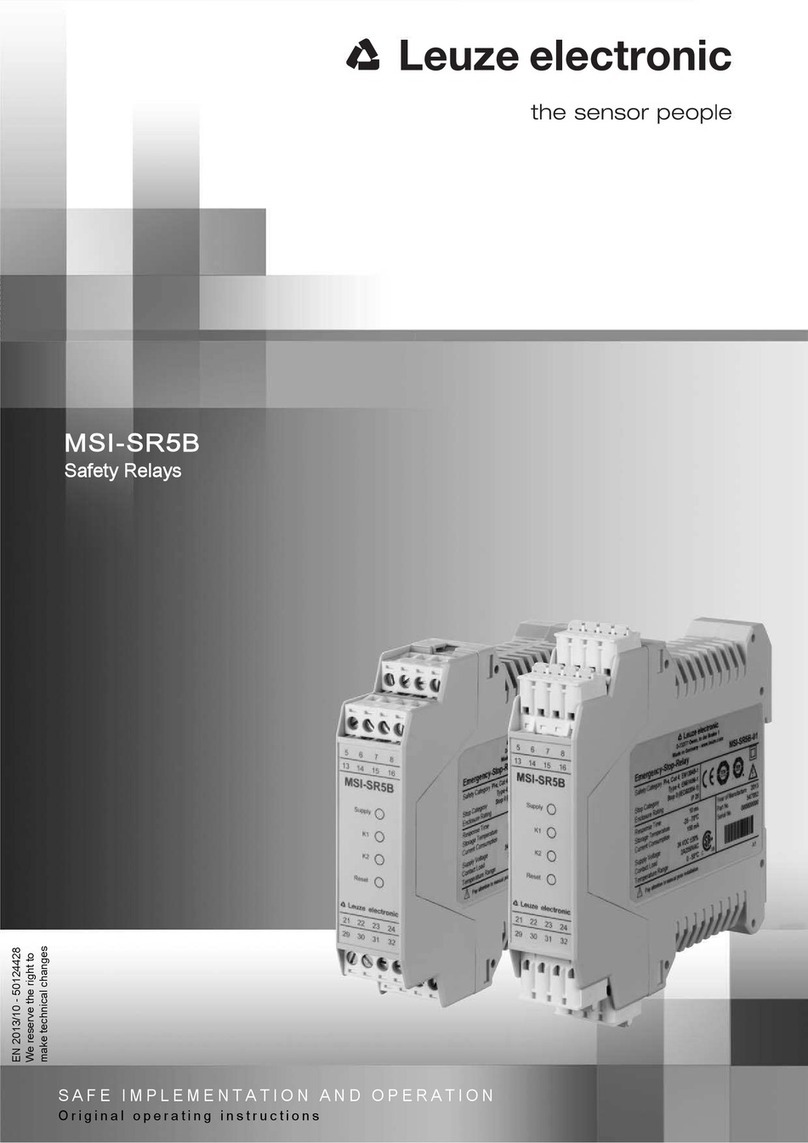
Leuze electronic MSI-TB 7
Only if the safety relay is correctly connected and correctly started up is the protective function of the
protective device ensured. To prevent misuse and resulting dangers, the following must be observed:
These operating instructions are included in the documentation of the system on which the protective
device is mounted and are available to the operating personnel at all times.
The safety relay is used as a safety monitoring device in combination with one or more light beam
safety devices for safeguarding danger zones or points of operation on machines and systems.
The safety relay must only be used after it has been selected in accordance with the respectively
applicable instructions and relevant standards, rules and regulations regarding labor protection and
safety at work, and after it has been installed, connected, checked and commissioned by a -
.
The safety relay must only be connected and commissioned in accordance with its specifications
(technical data, environmental conditions, etc.).
The Reset acknowledgment button for unlocking the start/restart interlock must be located outside
of the danger zone.
The entire danger zone must be visible from the installation site of the acknowledgment button.
The safety relay must be selected so that its safety-related capability meets or exceeds the required
Performance Level PL ascertained in the risk assessment (see table 14.1).
The machine or system control must be electrically influenceable so that a switch command sent by
the safety relay results in the immediate shutdown of the dangerous movement.
The construction of the safety relay must not be altered. When manipulating the Safety Relay, the
protective function is no longer guaranteed. Manipulating the safety relay also voids all warranty
claims against the manufacturer of the safety relay.
The safety relay must be tested regularly by a competent person (see chapter 9 Testing).
The safety relay must be exchanged after a maximum of 20 years. Repairs or the exchange of parts
subject to wear and tear do not extend the service life.
Any use other than that defined under the Approved purpose or which goes beyond that use is consid-
ered improper use.
Alone, the safety relay is not a complete protective device. It is not suitable for use in the following cases:
in explosive or easily flammable atmospheres.
on machines or systems with long stopping times.
Prerequisites for competent persons:
They have a suitable technical education.
They know the rules and regulations for labor protection, safety at work and safety technology and
can assess the safety of the machine.
They know the instructions for the safety relay and the machine.
They have been instructed by the responsible person on the mounting and operation of the machine
and of the safety relay.
Manufacturer and operating company must ensure that the machine and implemented safety relay func-
tion properly and that all affected persons are adequately informed and trained.
The type and content of all imparted information must not lead to unsafe actions by users.
The manufacturer of the machine is responsible for:
Safe machine construction
Safe implementation of the safety relay
Imparting all relevant information to the operating company
Adhering to all regulations and directives for the safe starting-up of the machine
